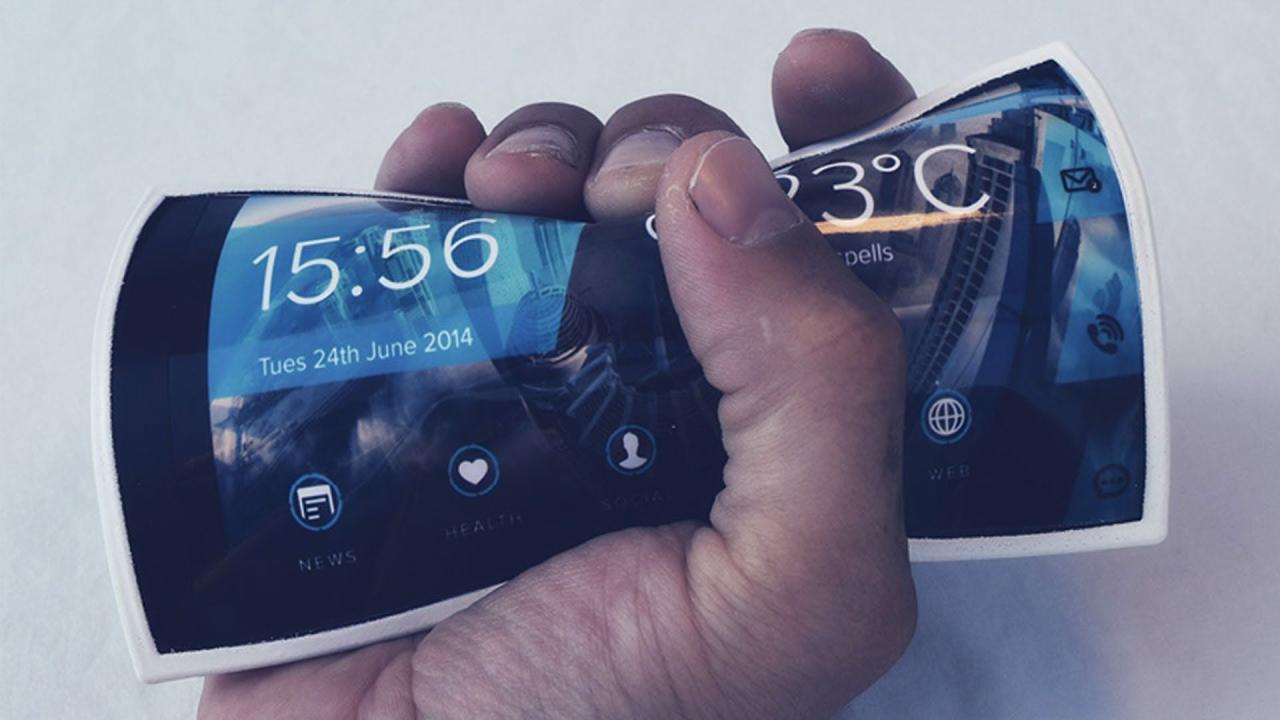The pace of technological innovation is accelerating at an unprecedented rate, constantly pushing the boundaries of what’s possible. From the subtle enhancements to our daily routines to groundbreaking advancements that redefine entire industries, the world of future gadgets is a dynamic landscape of ingenuity and anticipation. These aren’t just incremental improvements; they represent a leap forward in intelligence, connectivity, and human-computer interaction, promising a future that feels increasingly like science fiction made real. Powered by advancements in Artificial Intelligence (AI), ubiquitous connectivity (5G/6G), miniaturization, and novel materials, these devices are designed to seamlessly integrate into our lives, offering unprecedented levels of convenience, insight, and immersive experiences. This comprehensive article delves into the exciting realm of future gadgets, dissecting the underlying technological forces driving their development, the profound impacts they will have, the significant challenges they face, and the exhilarating possibilities they promise for reshaping human experience.
The Core Technologies Powering Future Gadgets

The next generation of gadgets isn’t built on a single breakthrough but rather a powerful convergence of several rapidly maturing technologies. These synergistic advancements allow for devices that are smarter, smaller, more powerful, and more intuitively connected than ever before.
A. Artificial Intelligence (AI) and Machine Learning (ML): This is the intelligent “brain” within future gadgets, enabling them to learn, adapt, and predict user needs.
- Contextual Awareness: Gadgets will understand our environment, activities, and even emotional states, adapting their functions accordingly. For example, a future earbud might detect stress levels and play calming music.
- Predictive Capabilities: AI will anticipate our needs, offering recommendations or taking actions before we even articulate them. Imagine a smart mirror suggesting wardrobe choices based on your calendar and local weather.
- Natural Language Understanding (NLU): Advanced voice assistants will understand nuanced commands, engage in more natural conversations, and even interpret sarcasm or emotions, making human-gadget interaction seamless.
- Personalization at Scale: AI will enable gadgets to hyper-personalize experiences for individual users, learning unique habits, preferences, and even biometric data to tailor functionality.
B. Ubiquitous Connectivity (5G, 6G, Satellite IoT): The backbone that allows these gadgets to communicate instantly and reliably, regardless of location.
- Low Latency: Crucial for real-time applications like augmented reality overlays, autonomous drone control, or instantaneous cloud-based AI processing.
- Massive Device Connectivity: 5G and future 6G networks are designed to support billions of connected devices simultaneously, handling the immense data traffic generated by a hyper-connected world.
- Global Reach: Advancements in satellite internet and Low-Power Wide Area Networks (LPWAN) will ensure even remote gadgets can communicate effectively, expanding the reach of smart ecosystems.
C. Miniaturization and Nanotechnology: Pushing the boundaries of size and power efficiency.
- Smaller Components: Advances in semiconductor manufacturing allow for increasingly tiny yet powerful processors, sensors, and power sources.
- Flexible and Stretchable Electronics: New materials enable devices to be integrated into fabrics, skin patches, or even bio-compatible implants, making gadgets virtually invisible.
- Enhanced Power Density: Innovations in battery technology (e.g., solid-state batteries, micro-fuel cells) are crucial for powering increasingly capable, yet smaller, devices for longer durations.
D. Advanced Sensing Technologies: Giving gadgets “senses” that often surpass human capabilities.
- High-Resolution Cameras and Depth Sensors: For sophisticated computer vision, 3D mapping, and gesture recognition.
- Medical-Grade Biometric Sensors: Continuously monitoring vital signs, blood chemistry (non-invasively), and even neurological activity for advanced health tracking.
- Environmental Scanners: Detecting air quality, pollutants, allergens, and even specific chemical compounds in the surrounding environment.
- Haptic Feedback Systems: Creating realistic tactile sensations that enhance immersive experiences (e.g., feeling textures in VR).
E. New Display Technologies and Immersive Interfaces: Redefining how we see and interact with digital information.
- MicroLED and Flexible Displays: Enabling ultra-thin, high-resolution, and bendable screens for wearables, foldable devices, and dynamic surfaces.
- Augmented Reality (AR) and Mixed Reality (MR): Overlaying digital information onto the real world (e.g., smart glasses displaying navigation directions) or blending virtual objects seamlessly with physical environments.
- Holographic Projection: While nascent, true holographic displays could offer truly three-dimensional, interactive interfaces without physical screens.
- Brain-Computer Interfaces (BCI): The ultimate hands-free interface, allowing direct control of devices through thought (though still largely in research phases for consumer use).
F. Sustainable Materials and Energy Harvesting: A growing focus on environmental responsibility.
- Recycled and Biodegradable Components: Reducing the ecological footprint of gadget manufacturing and disposal.
- Self-Powering Devices: Technologies like kinetic energy harvesting (from movement), thermoelectric generation (from body heat), and advanced solar cells to extend battery life or even eliminate the need for charging.
Anticipated Future Gadgets and Their Applications
The convergence of these technologies will give rise to an exciting array of new devices and significantly enhance existing ones across various domains.
Hyper-Intelligent Wearables
Beyond today’s smartwatches, wearables will become seamlessly integrated, proactive health and lifestyle companions.
- Smart Contact Lenses/AR Glasses: Displaying digital information directly in our field of view, offering real-time navigation, contextual information about surroundings, language translation, and virtual overlays. They could also monitor eye health.
- Biometric Skin Patches/Smart Tattoos: Continuous, medical-grade monitoring of vital signs, glucose levels (non-invasively), stress indicators, and even personalized drug delivery, becoming proactive health guardians.
- Mood-Adaptive Apparel: Clothing embedded with sensors that adjust temperature, compression, or even release calming scents based on physiological readings and detected emotional states.
- True Wireless Earbuds with Advanced AI: Beyond audio, these will offer real-time translation, context-aware information, and personalized soundscapes to enhance focus or relaxation, potentially monitoring brain activity.
Seamless Smart Home Ecosystems
Homes will become truly intuitive and responsive, anticipating needs and managing themselves autonomously.
- Adaptive Smart Surfaces: Walls, tables, and windows that double as dynamic displays, interactive control panels, or communication hubs, dissolving the distinction between screens and architecture.
- Robotic Household Assistants (Beyond Vacuums): Versatile, AI-powered robots capable of performing complex chores, organizing, and providing companionship or elder care, learning and adapting to household routines.
- Personalized Climate Zones: AI-powered HVAC systems that create micro-climates for individual occupants within different areas of a room, optimizing comfort and energy efficiency.
- Health Monitoring Integration: Seamlessly integrating health data from wearables and home sensors to proactively manage family well-being, alerting to potential illnesses or providing insights for healthy living.
Transformative Transportation Gadgets
Reshaping how we move, with a focus on autonomy, safety, and immersive experiences.
- Autonomous Personal Mobility Pods: Compact, self-driving vehicles for urban environments that offer personalized, on-demand transportation, optimizing routes and reducing congestion.
- AI-Powered Predictive Maintenance for Vehicles: Gadgets embedded in future cars will constantly monitor components, predicting failures before they happen and automatically scheduling service.
- Immersive In-Cabin Entertainment: High-resolution flexible displays and AR windows will transform vehicle interiors into dynamic entertainment or productivity spaces during autonomous journeys.
- Smart Helmets/Visors: For cyclists and motorcyclists, displaying navigation, blind spot warnings, and incoming calls directly onto the visor.
Revolutionary Productivity and Creativity Tools
Enhancing human capabilities and streamlining workflows.
- AI-Powered Personal Assistants (Beyond Voice): Anticipating tasks, managing schedules across all devices, and proactively suggesting solutions or information based on deep understanding of individual workflows and goals.
- Holographic Workstations: Projecting interactive 3D interfaces into the real world, allowing for intuitive manipulation of data, collaborative design, and immersive content creation without physical screens.
- Neuromorphic Computing Gadgets: Devices powered by chips designed to mimic the human brain, enabling unprecedented AI processing efficiency for complex tasks on-device.
- Adaptive Writing/Design Tools: Gadgets that learn individual creative styles and offer intelligent suggestions, generating content, or refining designs based on user intent.
Immersive Entertainment and Social Gadgets
Blurring the lines between the physical and digital for unparalleled experiences.
- Advanced VR/AR Headsets: Lighter, more comfortable, with wider fields of view, integrated haptics, and eye/face tracking for hyper-realistic avatars and social interactions in the metaverse.
- Multi-Sensory Feedback Devices: Gadgets that provide tactile, olfactory, and even gustatory feedback to enhance immersive digital experiences.
- AI-Powered Social Connectors: Devices that facilitate meaningful social interactions by identifying shared interests in real-time within physical spaces or suggesting relevant online communities.
The Transformative Benefits of Future Gadgets

The widespread adoption of these advanced gadgets promises to deliver a multitude of profound benefits that will reshape individual lives and societal structures.
A. Unprecedented Personalization and Convenience:
- Truly Seamless Experience: Gadgets will anticipate needs and act proactively, reducing friction in daily routines.
- Tailored to You: Devices will deeply understand individual preferences, health states, and work styles, offering customized support.
- Time Reclaimed: Automation and predictive features will free up significant amounts of time previously spent on mundane tasks.
B. Enhanced Health and Well-being:
- Proactive Health Monitoring: Continuous, non-invasive health tracking can detect potential issues early, enabling preventative care.
- Personalized Wellness Guidance: AI-powered feedback for exercise, nutrition, sleep, and stress management, adapting to real-time physiological data.
- Accessibility for All: Advanced interfaces (voice, BCI) and adaptive features will make technology more accessible to individuals with disabilities, empowering greater independence.
C. Increased Productivity and Creativity:
- AI-Augmented Capabilities: Gadgets will act as intelligent co-pilots, boosting efficiency in work, learning, and creative pursuits.
- Immersive Workspaces: AR/VR will create flexible, dynamic work environments that transcend physical limitations, fostering collaboration and innovation.
- Data-Driven Insights: Wearables and smart devices will provide rich data to help individuals optimize their performance and well-being.
D. Deeper Immersion and Entertainment:
- Hyper-Realistic Experiences: Advanced AR/VR, haptics, and sensory feedback will create unparalleled levels of immersion in gaming, entertainment, and social interactions.
- Personalized Content Delivery: AI will curate entertainment and information tailored precisely to individual tastes and moods.
E. Greater Safety and Security:
- Context-Aware Alerts: Gadgets will provide proactive warnings based on real-time environmental data or predicted risks.
- Enhanced Personal Security: Biometric authentication and secure communication will protect personal data and physical access.
- Emergency Assistance: Wearables with fall detection or emergency call features will provide crucial safety nets.
F. Environmental Sustainability (Potential):
- Resource Optimization: Smart devices can contribute to reduced energy and resource consumption in homes and industries.
- Longevity and Repairability: A shift towards more durable, modular, and repairable designs could reduce e-waste (though this is a challenge, not a given).
- Circular Economy: Future supply chains for gadgets might incorporate more recycling and reuse of materials.
Navigating the Challenges of Future Gadgets
Despite their extraordinary potential, the proliferation of future gadgets presents several significant challenges that demand careful consideration and proactive solutions.
A. Data Privacy and Security:
- Ubiquitous Data Collection: Gadgets will collect unprecedented volumes of highly personal and intimate data (biometric, emotional, location, behavioral). Ensuring the robust privacy and security of this data is a monumental task.
- Vulnerability to Hacking: Every connected gadget is a potential entry point for cyber threats. Compromised devices could lead to identity theft, surveillance, or even physical harm if they control critical systems.
- Lack of Transparency: Users often won’t know exactly what data is being collected, how it’s used, or with whom it’s shared, leading to a “black box” problem and erosion of trust.
- Synthetic Data and Deepfakes: As AI-powered gadgets generate realistic synthetic media, the challenge of discerning real from fake will intensify, impacting trust and security.
B. Ethical Dilemmas and Societal Impact:
- Algorithmic Bias: AI in gadgets, if trained on biased data, could perpetuate or amplify societal biases in recommendations, access, or even surveillance applications.
- Digital Divide: The cost and accessibility of advanced gadgets could widen the gap between those who can afford and benefit from these technologies and those who cannot, exacerbating existing inequalities.
- Over-reliance and Deskilling: Excessive reliance on AI-powered gadgets for decision-making or daily tasks could potentially diminish human critical thinking, problem-solving, and practical skills.
- Digital Addiction and Mental Health: The constant connectivity and immersive nature of future gadgets could intensify issues of digital addiction, social isolation (despite virtual connection), and mental health challenges.
- Surveillance Capitalism: The business models of many gadget manufacturers might prioritize data extraction for advertising or other commercial purposes over user well-being and privacy.
C. Interoperability and Standardization:
- Fragmented Ecosystems: The proliferation of diverse gadgets from numerous manufacturers with proprietary protocols will exacerbate current interoperability issues, leading to frustrating user experiences and vendor lock-in.
- Lack of Universal Standards: The absence of common communication protocols and data formats will hinder seamless interaction between devices and platforms.
- Integration Complexity: Building truly cohesive smart environments from disparate gadgets will remain a significant technical challenge.
D. Regulatory and Legal Frameworks:
- Lagging Legislation: Laws and regulations (e.g., on data privacy, AI ethics, product liability, consumer protection) often struggle to keep pace with rapid technological advancements, creating legal ambiguities.
- International Harmonization: Diverse national laws pose challenges for global manufacturers and users.
- Liability: Determining liability when AI-powered gadgets malfunction or cause harm will be complex, requiring new legal precedents.
E. Power and Sustainability:
- Energy Demands: The collective energy consumption of billions of increasingly powerful, always-on gadgets could be substantial, posing challenges for grid stability and environmental impact if not offset by renewables.
- E-Waste Accumulation: The rapid upgrade cycles and planned obsolescence of consumer electronics contribute massively to electronic waste, posing significant environmental disposal challenges.
- Resource Scarcity: The rare earth minerals and other raw materials required for manufacturing these advanced gadgets could face supply chain issues and ethical sourcing concerns.
F. Human-Computer Interaction and Usability:
- Intuitiveness vs. Complexity: Designing interfaces that are simple and intuitive despite the underlying technological complexity will be crucial for mass adoption.
- Over-Saturation: Users might experience “gadget fatigue” from a constant stream of notifications and the need to manage too many devices.
- Trust and Transparency: Building user trust in AI-powered gadgets, especially those that operate autonomously, will depend on clear explanations of their capabilities and limitations.
The Future of Gadgets
The future of gadgets is not merely about individual devices; it’s about the emergence of a truly intelligent, adaptive, and invisible digital layer that permeates our entire environment.
A. Ambient Intelligence and Invisible Computing: Gadgets will recede into the background, seamlessly integrated into our clothing, furniture, and surroundings. Computing will become ambient, proactively assisting us without requiring conscious interaction with screens or buttons.
B. Hyper-Personalized Digital Twins: Individuals will have comprehensive “digital twins” – real-time virtual representations of their physical selves, health, and activities, fueled by data from ubiquitous sensors and AI. These twins will enable predictive health insights, personalized learning, and optimized daily routines.
C. Brain-Computer Interfaces (BCI) for Mass Adoption: While currently nascent, BCIs could evolve from medical applications to consumer interfaces, allowing for direct thought-control of devices, communication, and immersive experiences, blurring the lines between mind and machine.
D. Advanced Robotics and Automation Integration: Gadgets will increasingly be mobile, autonomous robots that perform complex tasks in our homes, workplaces, and public spaces, acting as intelligent assistants and extending human capabilities.
E. Regenerative and Self-Healing Electronics: Materials science will advance to create gadgets that can self-repair minor damage or even harvest energy from their environment, significantly extending their lifespan and reducing environmental impact.
F. Quantum-Powered AI and Cybersecurity: The emergence of quantum computing will unlock unprecedented AI capabilities, while also necessitating the development of quantum-resistant cryptographic measures to secure the hyper-connected future gadget ecosystem.
G. Truly Multi-Sensory Digital Experiences: Beyond just sight and sound, future gadgets will stimulate all our senses (haptics, smell, even taste) to create truly immersive and indistinguishable digital realities, blurring the lines between the physical and virtual.
Conclusion
The journey into the future of gadgets is a thrilling, albeit complex, expedition. It promises a world of unparalleled convenience, profound insights, and transformative experiences. Navigating the ethical pitfalls and ensuring equitable access will be crucial. But ultimately, these intelligent companions are poised to fundamentally redefine what it means to be human in an ever-smarter, more interconnected world.












